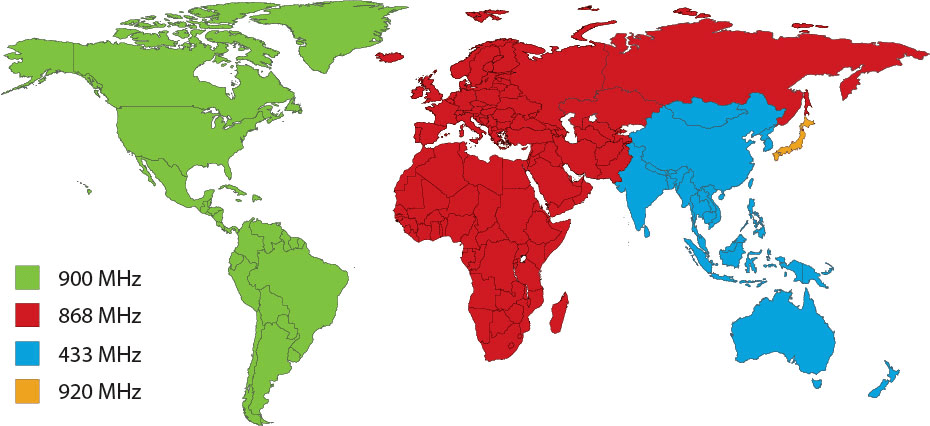Selecting the Right Radio Frequency for Your Wireless Sensor Network
Summary
When selecting a wireless sensor network there are few things you should consider to ensure that you are selecting the right frequency for your specific needs.
Monnit’s wireless sensor networks currently operate on the ISM 900MHz (902-928MHz) band as well as 868MHz and 433Mhz bands.

Radio Strength Over Distance
When a radio transmits a signal, that signal gradually loses strength over time and distance. When the transmitter and receivers are too far apart, the receiver can not “hear” the signal. The higher the frequency of the radio (i.e. 2.4GHz is > 900MHz) the quicker the wave loses its strength, resulting in shorter distances a transmitter and receiver can communicate. Side by side, a 900MHz signal will transmit almost 2.5 times further than a 2.4GHz signal. Additionally, the superior performance characteristics of 900MHz products tend to require less energy (resulting in lower power requirements) than wireless products in the 2.4Ghz frequency.
Obstructions to Radio Signal
Another thing to consider when selectiong a wireless sensor network frequency is the environment where it will be used. Higher frequency radios such as 2.4GHz, tend to propagate poorly through walls, trees and other obstructions. Even in line-of-sight situations higher frequency radios lose strength due to the size of the wave itself. A 900Mhz (and 868MHz) frequency has a 12 inch radio wave (from peak to valley) and can penetrate obstacles more efficiently.
Radio Frequency Congestion
An advantage of the 900MHz frequency is that it is not nearly as crowded as higher frequency bands. Blue Tooth devices, standard WiFi networks (802.11.x), Zigbee and other 802.15.4 devices all share the 2.4GHz frequency band creating radio interference. Most consumer electronics on the market today, run in the 2.4GHz band, making it the most crowded band in the market.
Monnit’s 900 and 868MHz wireless sensor networks provide a high performance, low power (and extremely low cost) alternative to similar products in the 2.4GHz space. When deploying these networks in North & South America (900MHz) and the EU (868MHz), these products can be used without any additional government approvals.
Conclusion
For additional information about this topic or to have further questions answered, please contact info@monnit.com.